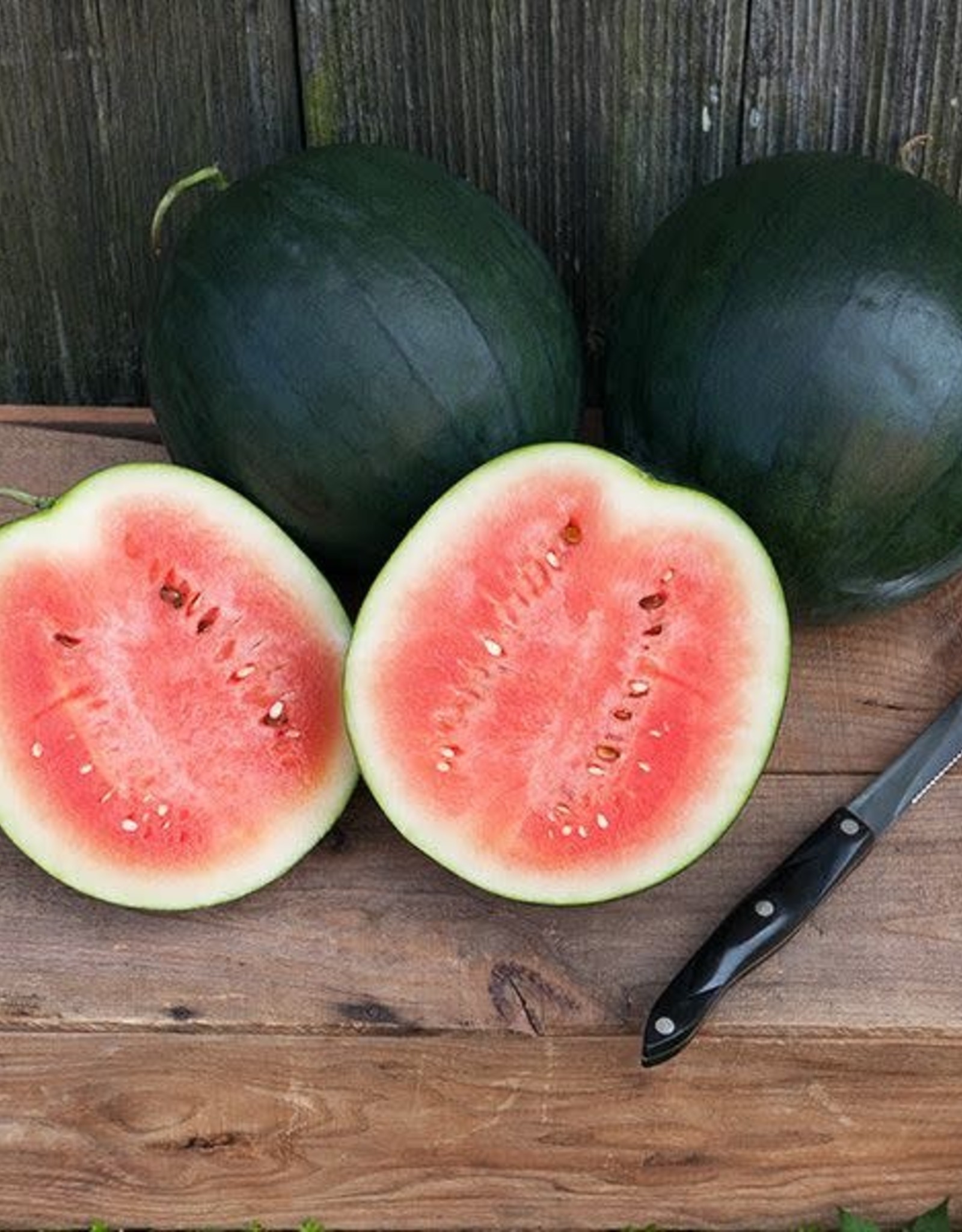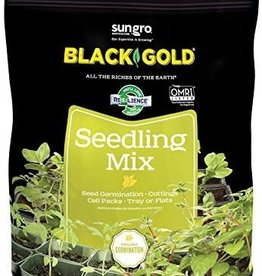HM Sugar Baby Watermelon 1/16 OZ
| Availability: | In stock (8) |
Photo and Description credit: High Mowing Seeds
Excellent short season variety with reliable yields of sweet, juicy melons.
The standard for small watermelons! Perfectly rounded fruits range from 7-8.5" in diameter with a solid green rind and deep red flesh. Our strain has been selected for cool growing conditions and high yields.
- Drought tolerant
- 6-12 lbs
500-750 (625 avg) seeds/oz.
All seed specifications are an average measurement of seeds per ounce based on crop type and are not specific to individual varieties.
Cultural Info
Watermelons (Citrullus lanatus) are warm season tender annuals in the Cucurbitaceae family, which includes cucumbers, summer squash and winter squash, and gourds
Soil Nutrients and Requirements
Sandy or light textured soils that warm easily in the spring are desirable. Melons are heavy feeders. Give 80-120 lbs of N per acre. Calcium deficiency can lead to blossom end rot, especially when adequate moisture is not available. Use dolomitic limestone.
Seeding Depth
½”
Plant Spacing
Plant spacing: 12-18"
Row Spacing
6’ row centers.
When to Sow
Days to maturity are from transplanting, add 10-14 days if direct seeding.
Other Considerations
Plastic mulch and floating row cover are used to increase soil and air temperatures as well as ward off insects, especially cucumber beetles.
Harvest
Ripeness is determined by four methods: when the tendril nearest the fruit is dried and brown; when the ground spot has turned from white to yellow; when the blossom end of fruit becomes soft; and the ubiquitous “thump test”— fruit should sound hollow. Cut fruit cleanly from the vine to avoid stem-end rot.
Storage
Store at 45°F and 85% humidity for up to 3 weeks.
Pest Info
- Striped cucumber beetles cause feeding damage to the leaves, and often transmit bacterial wilt. Larvae feed on the plant roots. Row covers can provide effective protection, but must be removed during flowering to allow pollination. Practice crop rotation and good sanitation to eliminate overwintering habitat. Frequent application of kaolin clay and/or pyrethrum have shown some effective control.
- Squash vine borer will cause plants to look wilted even when moisture is plentiful. Slice open stem and remove and destroy.
- Squash bugs can be controlled by handpicking. Bury or compost plant residues at the end of the season.
Disease Info
- A relatively new disease called Bacterial Fruit Blotch (BFB) (Acidovorax avenae subsp. citrulli) particularly affects watermelons. BFB can be spread by seed and by infected transplants, as well as from plant residues and/or alternative hosts. Symptoms on seedlings are “oily” dark lesions that typically parallel the veins. Seedlings of some varieties die rapidly, while others persist into maturity and set fruit that will then become contaminated by the inoculum on the leaves. Fruit symptoms are characterized by a dark green stain on the upper side of the fruit. Infection does not penetrate the rind, but eventually causes it to crack and often emit white foam, caused by gases formed by invading pathogens. There are no resistant varieties as of yet. Other cucurbit crops can also be infected by BFB, but the disease does not typically affect the fruit in these crops. However, other infected crops can serve as a source of inoculum for watermelon crops. Due to the prevalence and severity of BFB, customers wishing to purchase over ¼ ounce of watermelon seed must print, sign and submit the Watermelon Waiver. We cannot ship any amount of watermelon seed to South Carolina.




